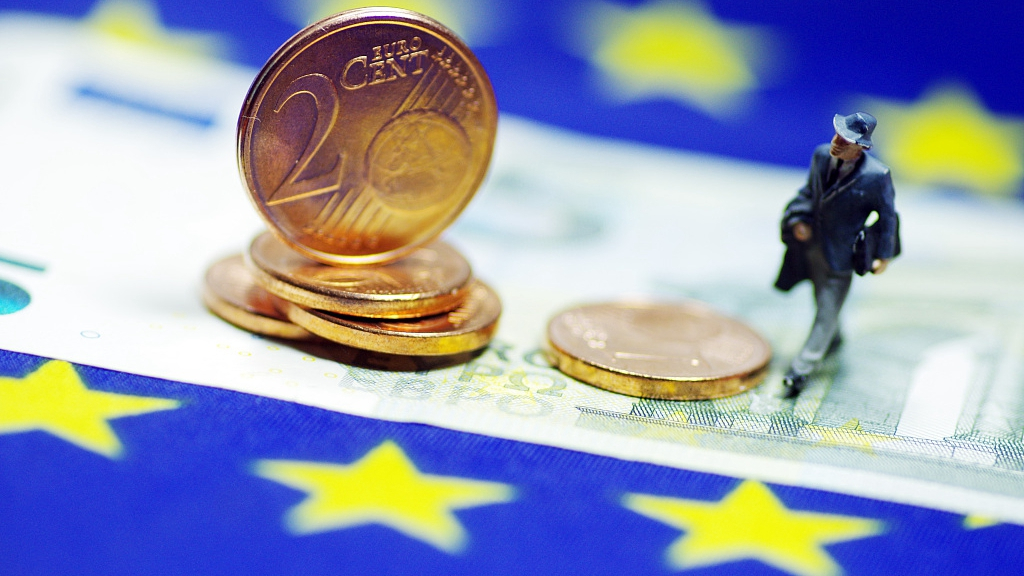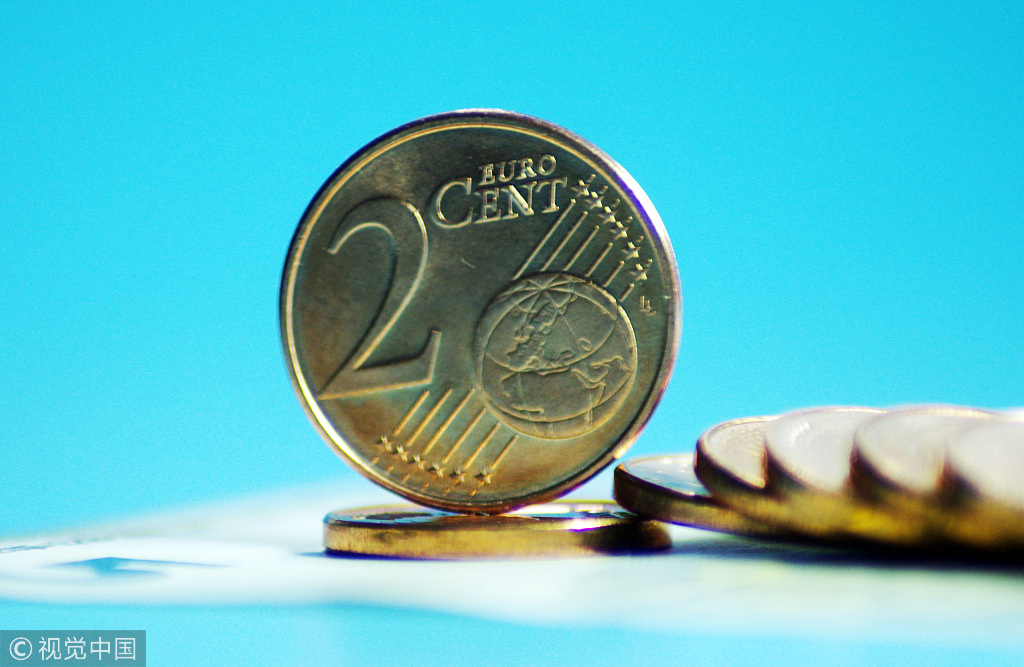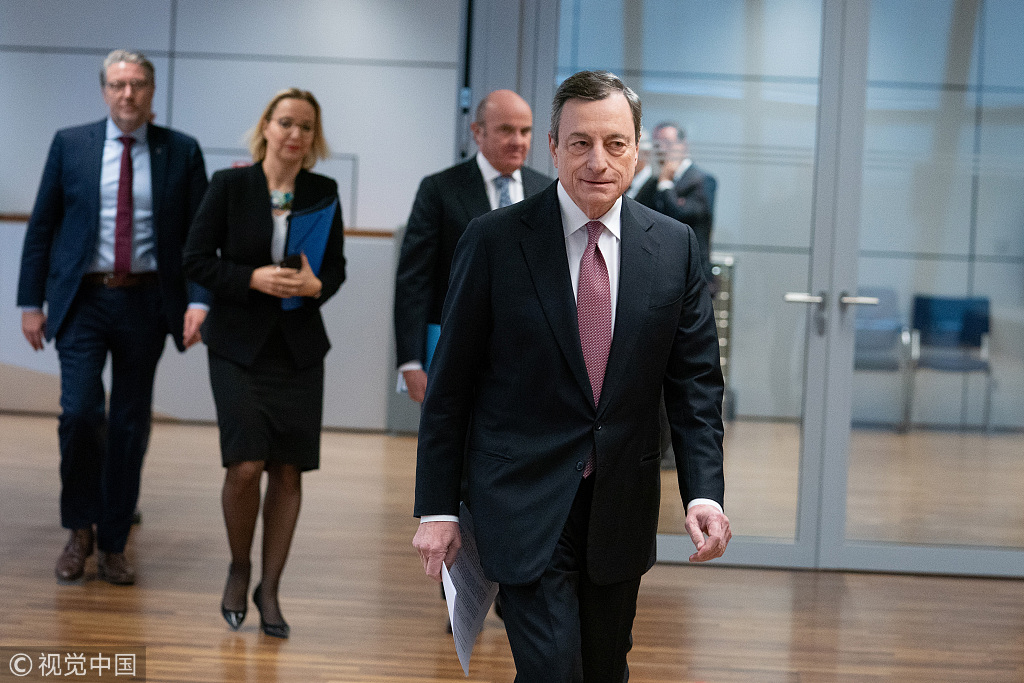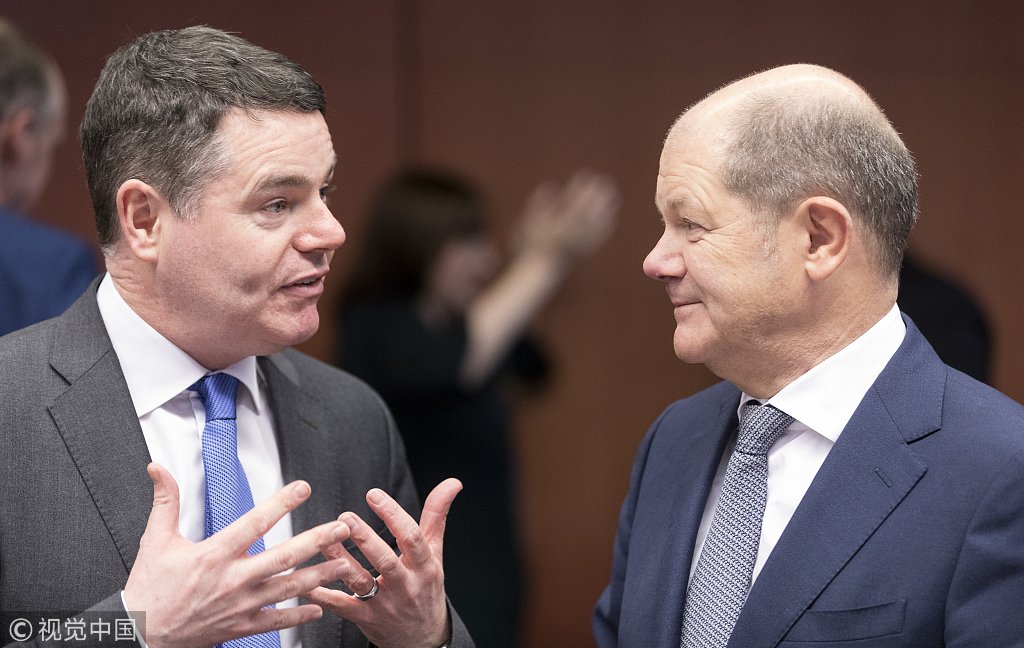
Opinion
10:40, 26-Jan-2019
The euro's first 20 years
Updated
14:56, 26-Jan-2019
Jeffrey Frankel

Editor's note: Jeffrey Frankel is professor of Capital Formation and Growth at Harvard University. The article reflects the author's opinion, and not necessarily the views of CGTN.
Since its introduction two decades ago, the euro has faced serious challenges. So far, it has survived intact. Yet, on the common currency's 20th anniversary, it is worth identifying problems that have been encountered and, one hopes, to learn from past mistakes.
A first critical problem was inherent in the application of a common currency to a large and varied set of countries: They did not meet the criteria for an “optimum currency area,” as American economists pointed out. In particular, the members lacked cyclical synchronization. It is much harder to go without monetary independence if your economy's needs are not aligned with those of the other countries in the union.
In 2004-2006, for example, Ireland needed a tighter monetary policy than the European Central Bank was prepared to set, given a housing bubble and economic overheating; but it had ceded the authority to revalue its currency or raise interest rates.

VCG Photo
VCG Photo
Likewise, in 2009-2013, when Ireland needed an easier monetary policy than the European Central Bank's (ECB), given a steep recession, it was unable to devalue its currency, print money, or lower its interest rate.
A second mistake was that some peripheral Eurozone countries maintained large current-account deficits during the euro's first decade. At the time, these countries' large net capital inflows were viewed as a sign of efficiency-improving financial integration. In retrospect, the imbalances, attributable in part to a rise in the periphery's unit labor costs relative to Germany's, were less benign.
Many countries – most notably, Greece – also maintained large budget deficits and high debt levels. They confirmed longstanding fears among wealthier members – especially Germany – that they would end up being forced to bail out their profligate partners, for which the expectation of being rescued amounted to a perverse incentive.
To their credit, the architects of Europe's monetary union recognized moral hazard as a central vulnerability, and tried to address it by requiring that countries cap their budget deficits at three percent of GDP, and including a “no bail-out” clause in the Maastricht Treaty.

Mario Draghi, president of the European Central Bank (ECB), arrives for a rates decision news conference in Frankfurt, Germany, January 24, 2019. /VCG Photo.
Mario Draghi, president of the European Central Bank (ECB), arrives for a rates decision news conference in Frankfurt, Germany, January 24, 2019. /VCG Photo.
But the fiscal rules proved unenforceable. Virtually all Eurozone members (including Germany) soon breached the three percent deficit ceiling. And though governments repeatedly claimed that fiscal targets would be achieved in the future, those expectations were based on overly optimistic growth forecasts.
It did not help that, with the creation of the Eurozone, highly indebted periphery governments were suddenly able to borrow at virtually the same interest rates as Germany. Even within the United States, indebted states like Illinois must pay an interest-rate premium relative to other states.
The Eurozone's failure to shift more fiscal authority to the supra-national level was repeated in the area of banking regulation. European economists had warned that pan-Eurozone banking regulation is essential to the common currency's long-term sustainability, only to be ignored. To be fair, these problems cannot really be called mistakes by Eurozone leaders, as any attempt to address them would have faced overwhelming political opposition.
In other ways, however, the Eurozone's leaders really did shoot themselves in the foot. For example, the ECB mistakenly raised interest rates in July 2008 and again, twice, in 2011, despite the global recession.

Irish Minister for Public Expenditure and Reform Paschal Luke Donohoe (L) is talking with German Federal Minister of Finance Olaf Scholz (R) prior to an Eurogroup ministers' meeting at the Justus Lipsius, the EU Council headquarters in Brussels, Belgium, January 21, 2019. /VCG Photo.
Irish Minister for Public Expenditure and Reform Paschal Luke Donohoe (L) is talking with German Federal Minister of Finance Olaf Scholz (R) prior to an Eurogroup ministers' meeting at the Justus Lipsius, the EU Council headquarters in Brussels, Belgium, January 21, 2019. /VCG Photo.
Moreover, when the Greek crisis erupted at the beginning of 2010, European leaders did not respond effectively. Instead, they delayed sending Greece to the International Monetary Fund (IMF) and writing down Greek debt, even though the debt-to-GDP ratio was clearly on an unsustainable path, even with stringent fiscal austerity.
In fact, the push for austerity after 2009 backfired spectacularly, as it caused incomes in periphery countries to fall far more than the European Commission, the ECB, and the IMF had anticipated. Even leaving aside the economic cost of the recession and the political cost of the resulting populist anger, fiscal austerity did not achieve its goal of putting countries like Greece onto sustainable debt paths. On the contrary, the fall in GDP was larger than any fall in debt, causing debt-to-GDP ratios to rise even faster.
The implementation of fiscal austerity during a time of crisis, together with the high spending of the Eurozone's early years, constitutes pro-cyclical fiscal policy. Indeed, Greek fiscal policy is among the world's most pro-cyclical. That does not put the Eurozone on a strong footing to weather future crises.
This is not to suggest that the euro has not had its successes. For starters, the transition from 11 individual currencies to the euro went very smoothly. The European currency crises of 1992 and 1993, as well as more recent chaotic demonetizations elsewhere, show that a successful transition was far from guaranteed.
A second early success was that, by virtually all measures of international use, the euro instantly became the world's second global reserve currency. Moreover, the desire to be admitted to the club led to favorable reforms in many aspiring member countries, particularly the Central and Eastern European countries that later joined the European Union.
More recent entries on the “success” side of the ledger include the progress of some periphery countries, particularly Spain, in reducing their previously noncompetitive unit labor costs. ECB President Mario Draghi deserves top marks for balancing Germany's demand for fiscal discipline and the Mediterranean need for accommodation. His July 2012 declaration that the ECB would do “whatever it takes” to preserve the euro calmed markets is a vital turning point in the crisis.
Perhaps most important, public opinion polls indicate that, in recent years, the euro has achieved strong popular support, with 64 percent of citizens supporting the common currency in November 2018. This offers hope that, if the Eurozone's leaders can learn from past mistakes, the monetary union will survive and even thrive in the future.
Copyright: Project Syndicate, 2019.
(If you want to contribute and have specific expertise, please contact us at opinions@cgtn.com.)

SITEMAP
Copyright © 2018 CGTN. Beijing ICP prepared NO.16065310-3
Copyright © 2018 CGTN. Beijing ICP prepared NO.16065310-3